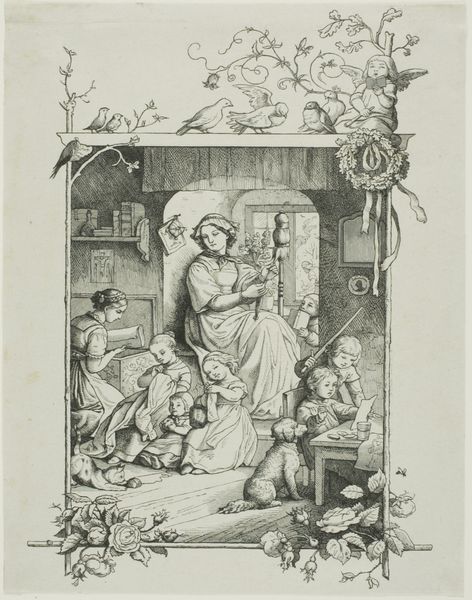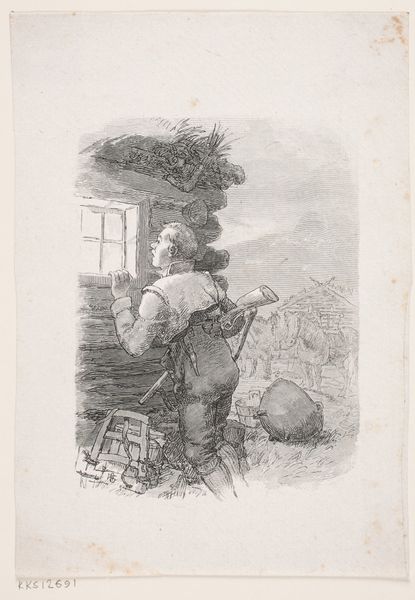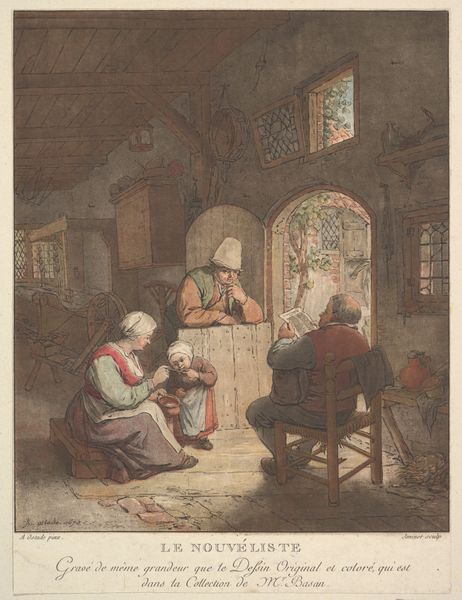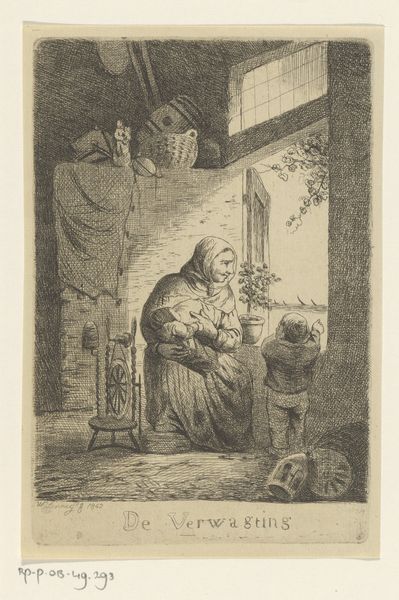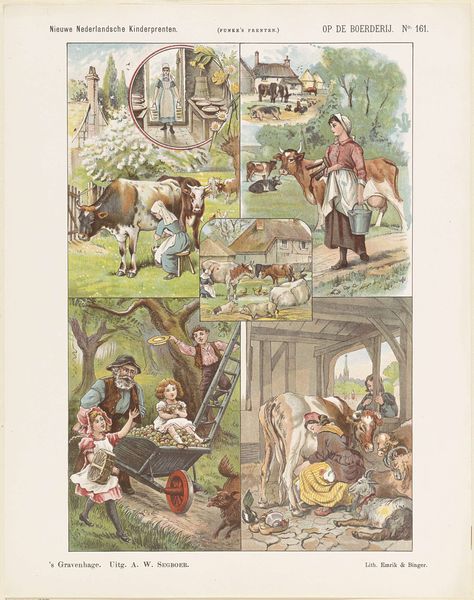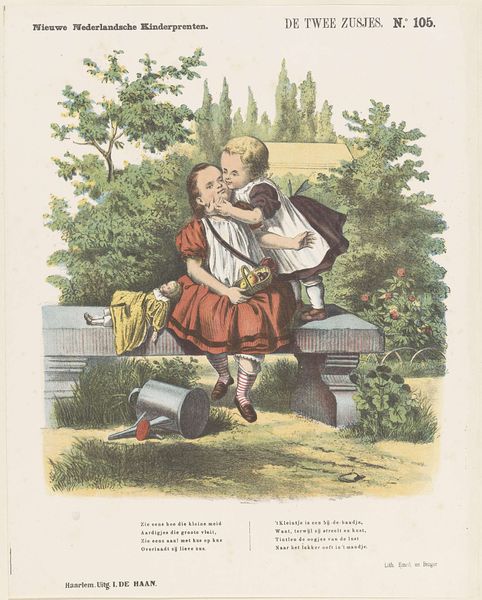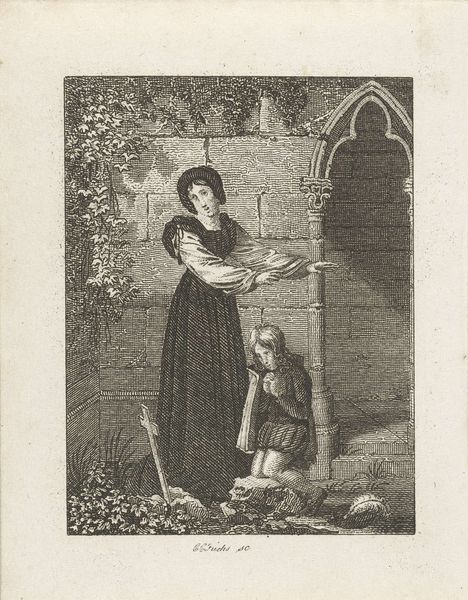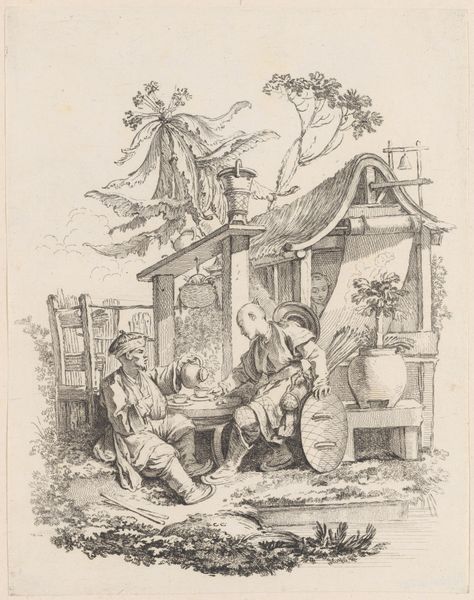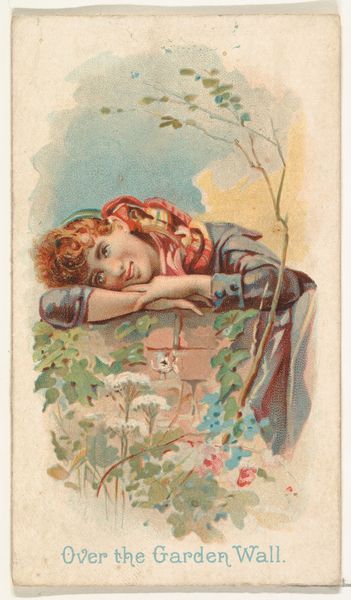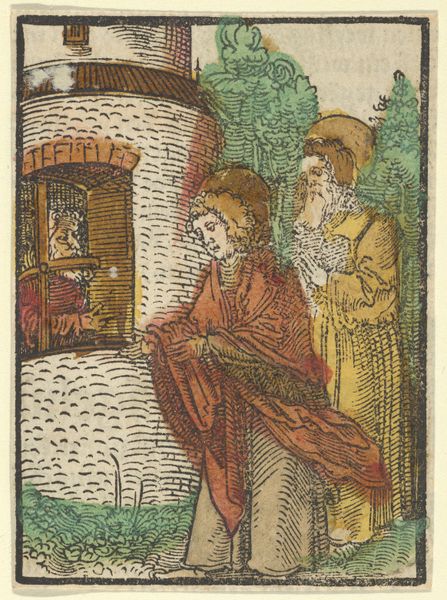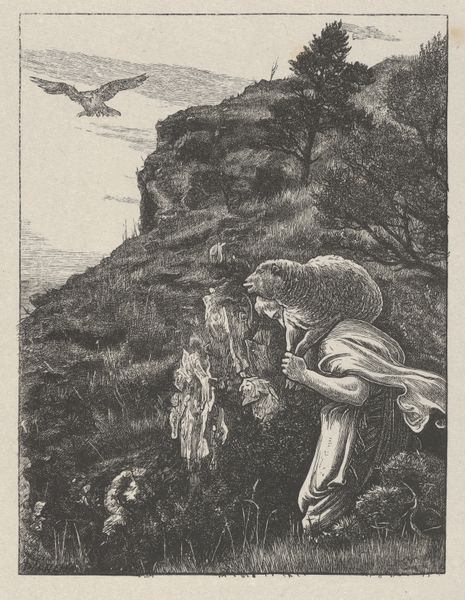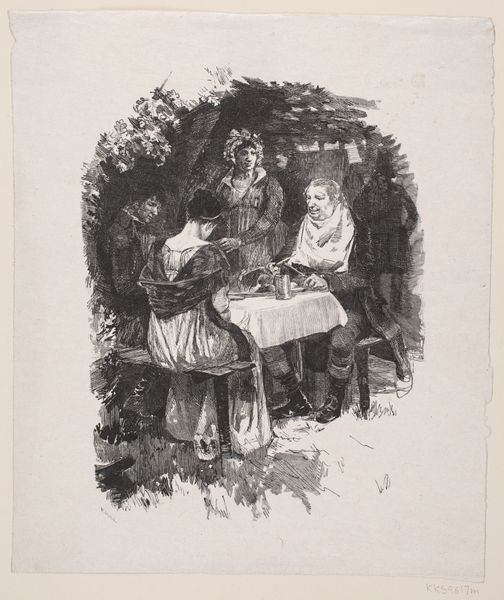
watercolor
#
narrative-art
#
watercolor
#
genre-painting
Dimensions: height 367 mm, width 267 mm
Copyright: Rijks Museum: Open Domain
Curator: Let's explore this watercolor work called "De krekel en de mier," which translates to "The Cricket and the Ant," made sometime between 1876 and 1890 by Michelet. Editor: Well, the first thing that strikes me is the chilly atmosphere! The pale, wintry hues contrast with the vivid holly border, framing a stark narrative of cold and apparent refusal. Curator: Absolutely. This piece serves as a visual interpretation of the classic fable by La Fontaine, deeply rooted in socio-economic themes. We see the cricket, symbolizing carefree artistic expression, contrasted against the ant's prudent industriousness, begging for shelter and sustenance during winter. It critiques societal values. Editor: The artist's meticulous brushwork in defining textures—look at the snow clinging to the rooftops compared to the ragged edges of the cricket's clothing—contributes to a complex semiotic code of poverty versus stability. The very composition emphasizes a visual and tangible divide between the "haves" and the "have-nots," which creates depth and stark meaning. Curator: Precisely. The mother ant, peering out with her children from what seems like an upper window in this image, could embody the moral austerity promoted by dominant ideologies, stigmatizing those who don't conform to strict labor ethics. The composition further echoes patriarchal norms of the period regarding family, labor, and expectations of women. Editor: Yet, there's something compelling about how the musical instrument is almost carelessly thrown down. It appears that there is the presence of something visceral—like rhythm itself cannot be entirely abandoned—perhaps a latent hope. Curator: Yes, by leaving us with this tiny detail Michelet might have been subtly signaling the indispensable function of creative pursuits—ones that sustain and give voice when practical pursuits leave an emptiness. Editor: Seeing it through the lens of pure formal components really brings home how powerfully such an unequal division of compositional elements generates meaning, a tension hard to ignore! Curator: Indeed, looking at Michelet’s rendering within the cultural landscape allows for us to reflect upon who gets afforded protection within any structure, then and now.
Comments
No comments
Be the first to comment and join the conversation on the ultimate creative platform.
